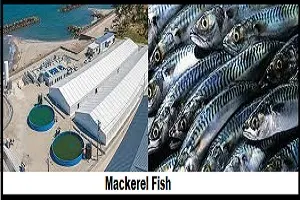Mackerel fish, a name that might ring familiar to seafood enthusiasts or lovers of ocean cuisine. This fish, with its distinctive striped appearance, isn't just a favorite in the kitchen but also plays a significant role in the marine ecosystem. Let's delve deeper into this fish.
Life and Habitat
Mackerel fish (Scomber scombrus) belong to the Scombridae family and are found in various waters across the globe, from the Atlantic Ocean to the Mediterranean Sea. They are known as migratory fish that form large schools during their long journeys across the oceans. Typically, they gather near the water's surface, but sometimes can also be found at greater depths.
Physical Characteristics
Mackerel fish have a slender body with a bluish-green back and silver-white belly. Their distinguishing feature is the black stripes that run horizontally across their body. Their tail fin is forked and small, while their dorsal fin is relatively long. Additionally, they are known to have small sharp teeth in their jaws, suitable for preying on plankton, crustaceans, and small fish.
Role in the Ecosystem
Mackerel fish play a crucial role in the marine food chain. They are aggressive predators, feeding on various types of plankton, small fish, and crustaceans. On the flip side, they also serve as prey for various marine predators, including sharks, dolphins, and seabirds. As efficient predators, the mackerel population helps maintain the balance of the marine ecosystem.
Benefits to Humans
From a human perspective, mackerel fish are an important source of animal protein. They have flesh rich in omega-3 fatty acids, vitamin D, and various other essential nutrients. Additionally, mackerel fish are an economic source for fishermen in many countries. Their flesh is often processed into various delicious dishes, ranging from grilled and smoked to served fresh atop sushi.
Conservation and Management
Although mackerel fish are still widespread in the world's waters, their population is not immune to human exploitation pressures. Overfishing, climate change, and habitat degradation pose serious threats to the survival of this species. Therefore, sustainable conservation and management efforts need to be continually implemented to ensure that the mackerel fish population remains healthy and sustainable.
Comprehensive Guide to Mackerel Fish Farming
Mackerel fish (Scomber scombrus) is a fascinating species for aquaculture. With the increasing demand for marine protein sources, mackerel fish farming can be a promising option for fish farmers. Here is a step-by-step guide to effectively and sustainably start mackerel fish farming:
1. Farming Location Preparation
- Choose a suitable farming location, typically in deep waters with good water flow.
- Ensure basic infrastructure availability like sturdy cages or floating nets resistant to sea conditions.
2. Seed Selection
- Purchase mackerel fish seeds from reliable hatcheries or consider starting from self-spawning.
- Ensure selected seeds are healthy, active, and free from diseases.
3. Cage or Pen Preparation
- Prepare cages or pens of appropriate size and additional equipment like automatic feeders.
- Ensure cages have good ventilation and drainage systems.
4. Feeding Management
- Provide protein-rich feed such as fish pellets or natural feeds like plankton and crustaceans.
- Schedule regular feeding and adjust according to fish requirements.
5. Health Management
- Regularly monitor fish health conditions, including checking for signs of diseases and parasites.
- Implement disease prevention measures, such as maintaining cage cleanliness and providing quality feed.
6. Environmental Control
- Monitor environmental conditions like water temperature, salinity, and water quality regularly.
- Adjust farming practices according to environmental changes, e.g., increasing air circulation if water temperature rises.
7. Maintenance and Harvesting
- Perform cage maintenance periodically, including cleaning cages from leftover feed and fish waste.
- Determine the right time for harvesting, usually when fish reach the desired size.
8. Post-Harvesting
- After harvesting, sort and grade fish based on size and quality.
- Prepare fish for sale or further processing, such as grinding or salting.
Conclusion
From their long journeys across the oceans to becoming a vital part of our food menu, mackerel fish play a significant role in the marine ecosystem and human life. With a deeper understanding of this species, we can better appreciate marine biodiversity and play a role in its conservation efforts for future generations.
Mackerel fish farming is an exciting venture with the potential for profitability for fish farmers. With a good understanding of farming requirements and effective management, stable and high-quality mackerel fish production can be expected. This guide aims to be beneficial to aspiring fish farmers looking to start sustainable mackerel fish farming ventures.
That is the article entitled Mackerel Cultivation. If there are any deficiencies or errors in writing this article, Baraja Farm express their deepest apologies. Please leave a wise message in the comments column provided. Thank you for visiting, hopefully it's useful.
Other reading materials, can help with school assignments, click Pustaka Pengetahuan
To increase insight and knowledge, please click Berbagai Reviews
For tutorial on how to cultivate, please click Baraja Farm Channel
Social media please click facebook







0 Komentar